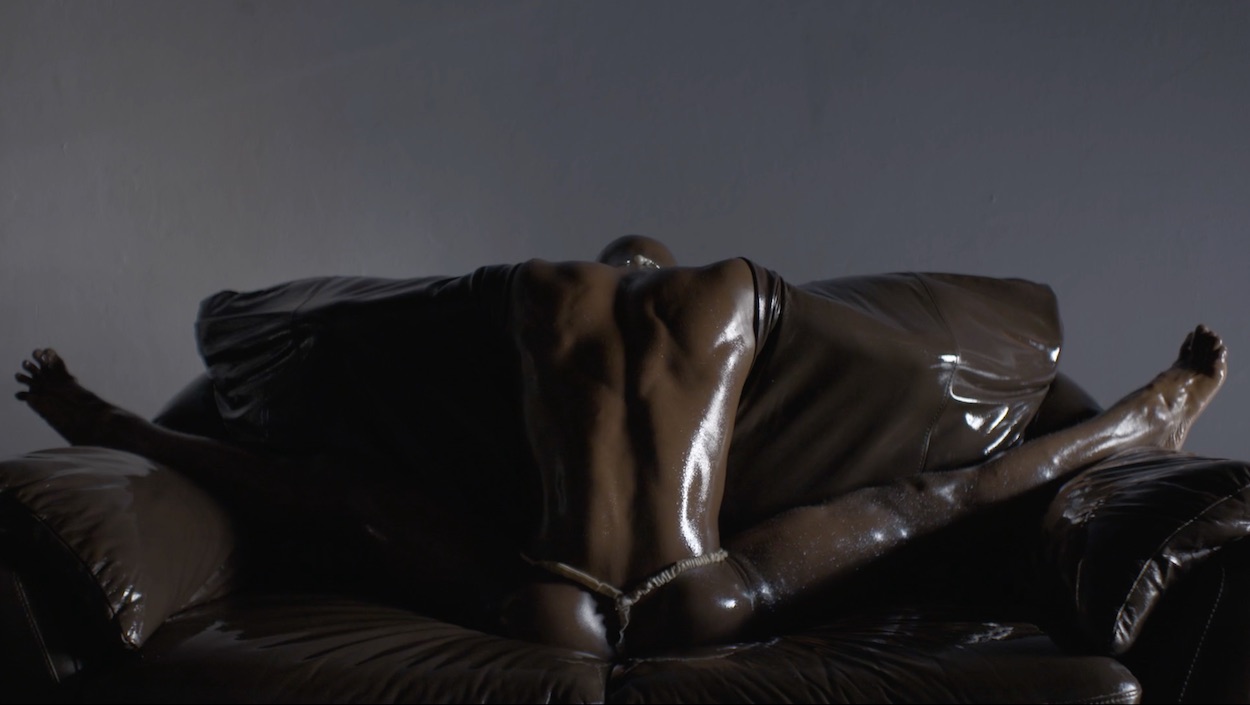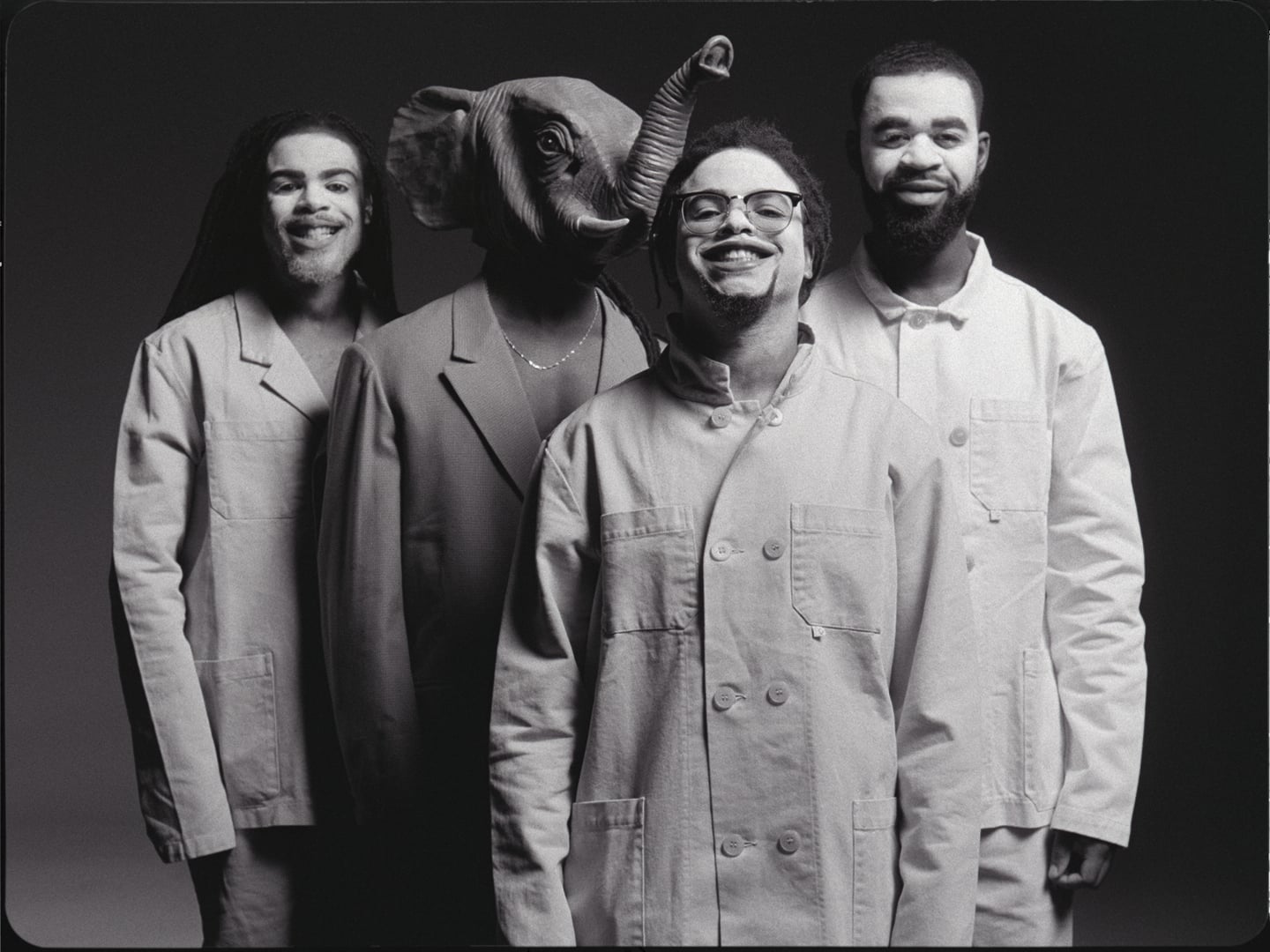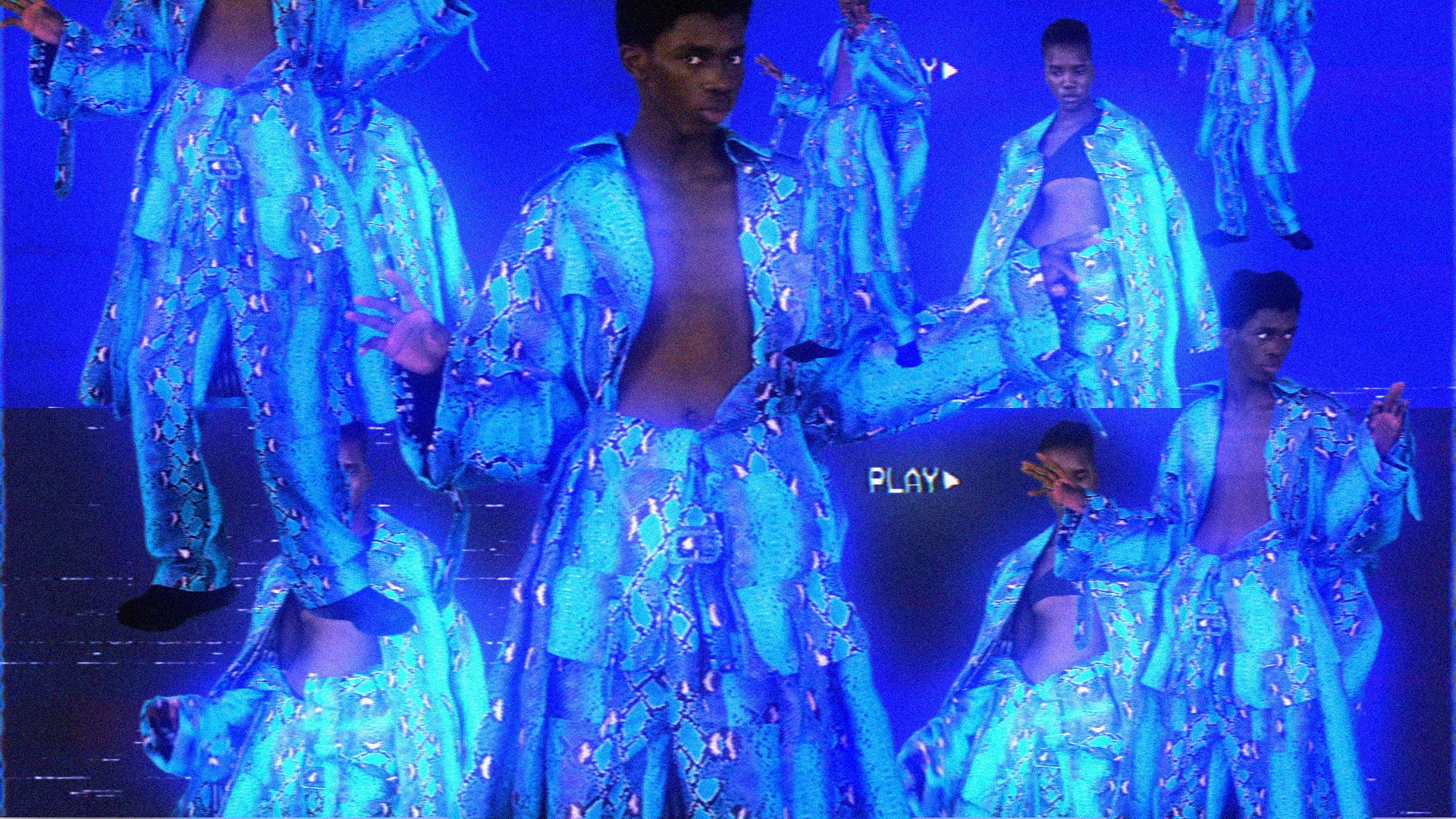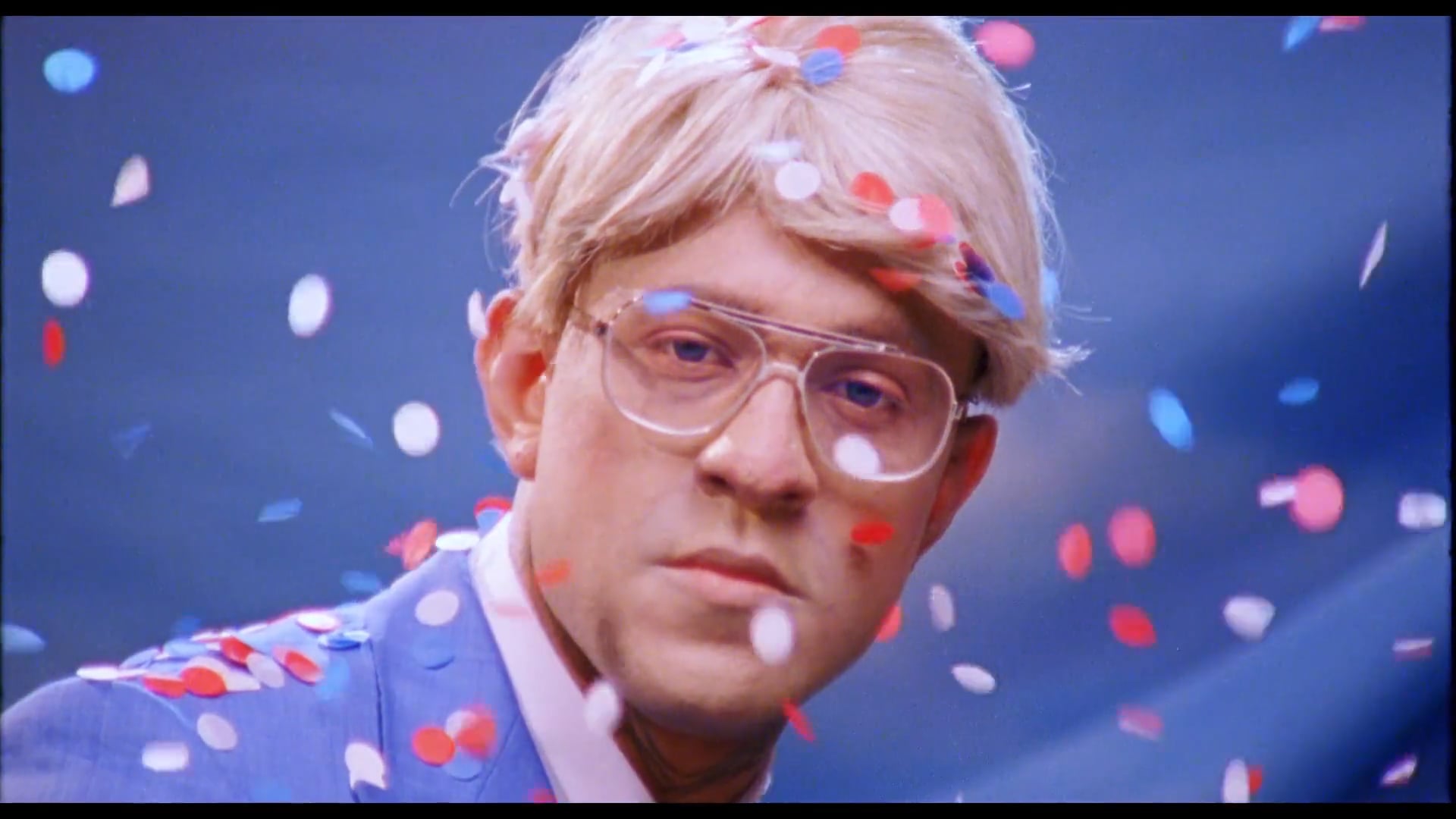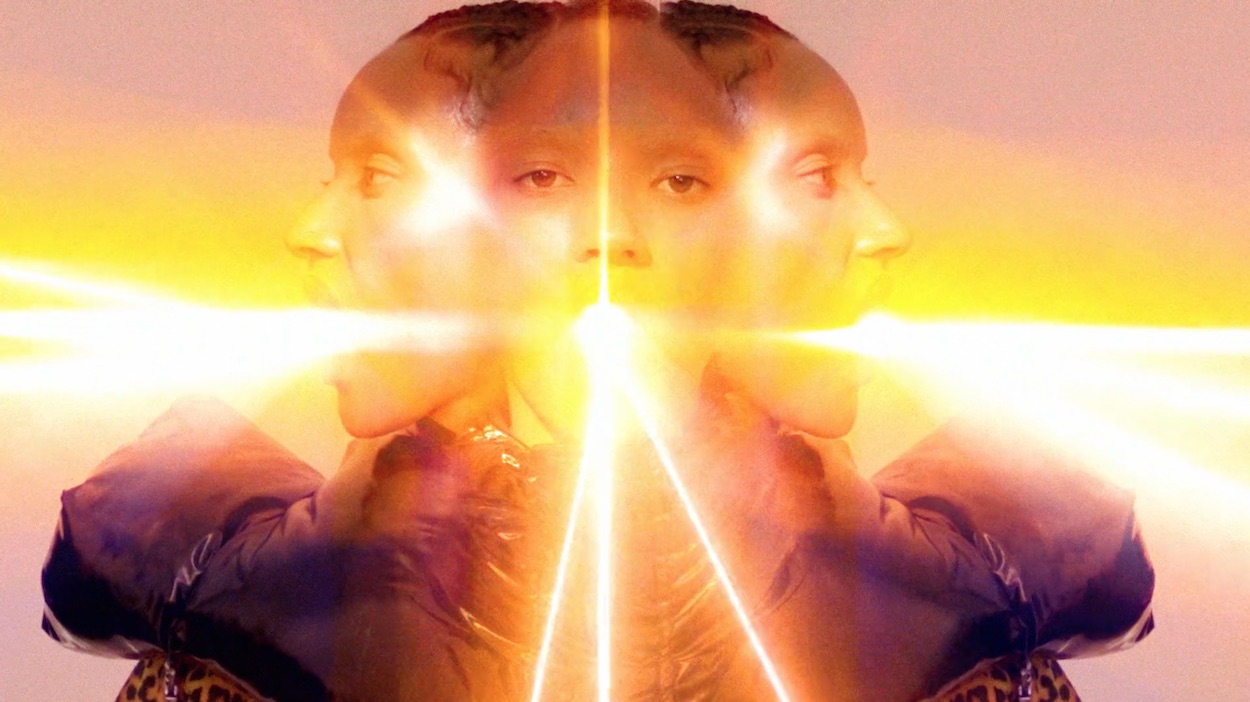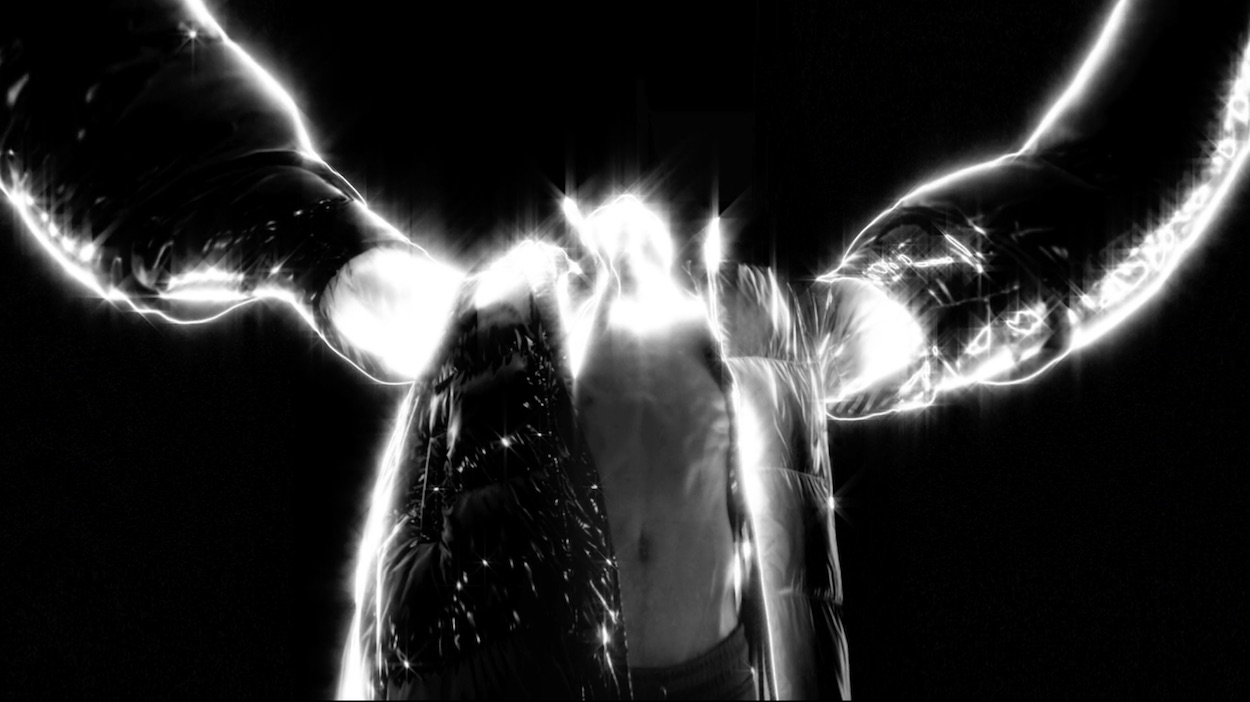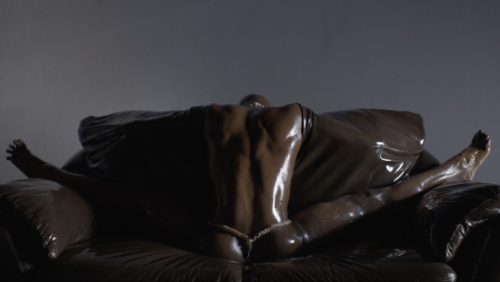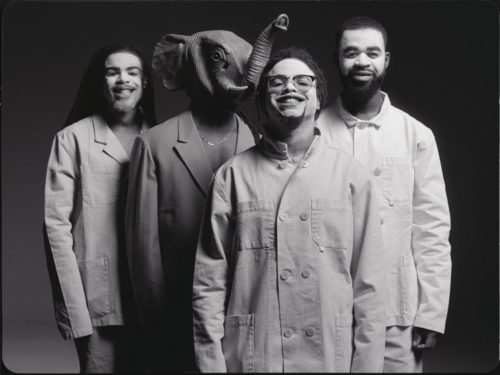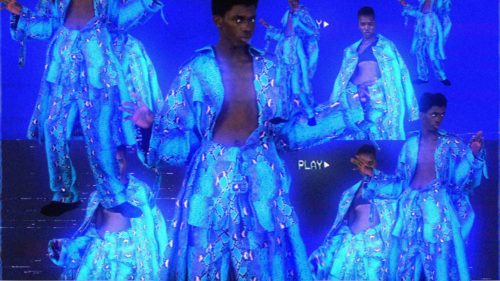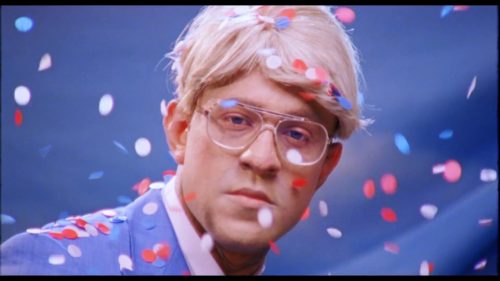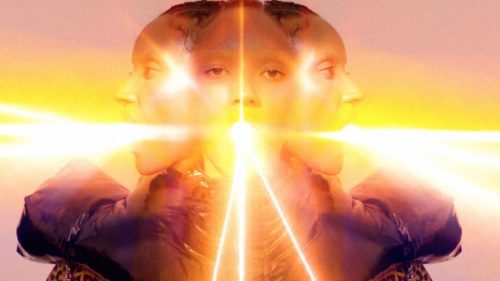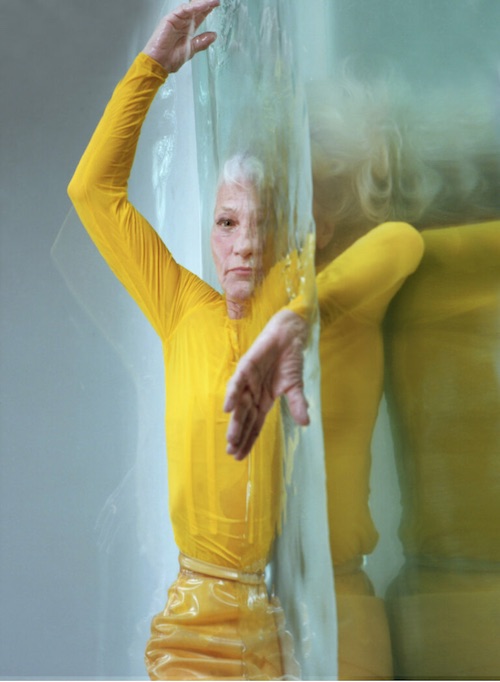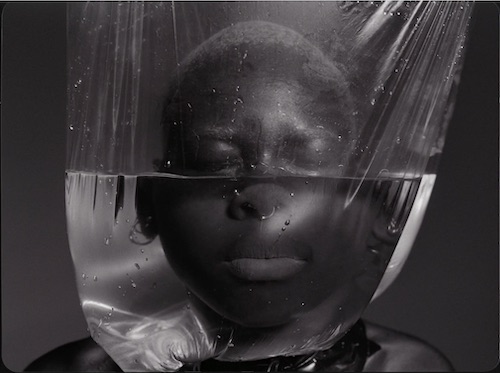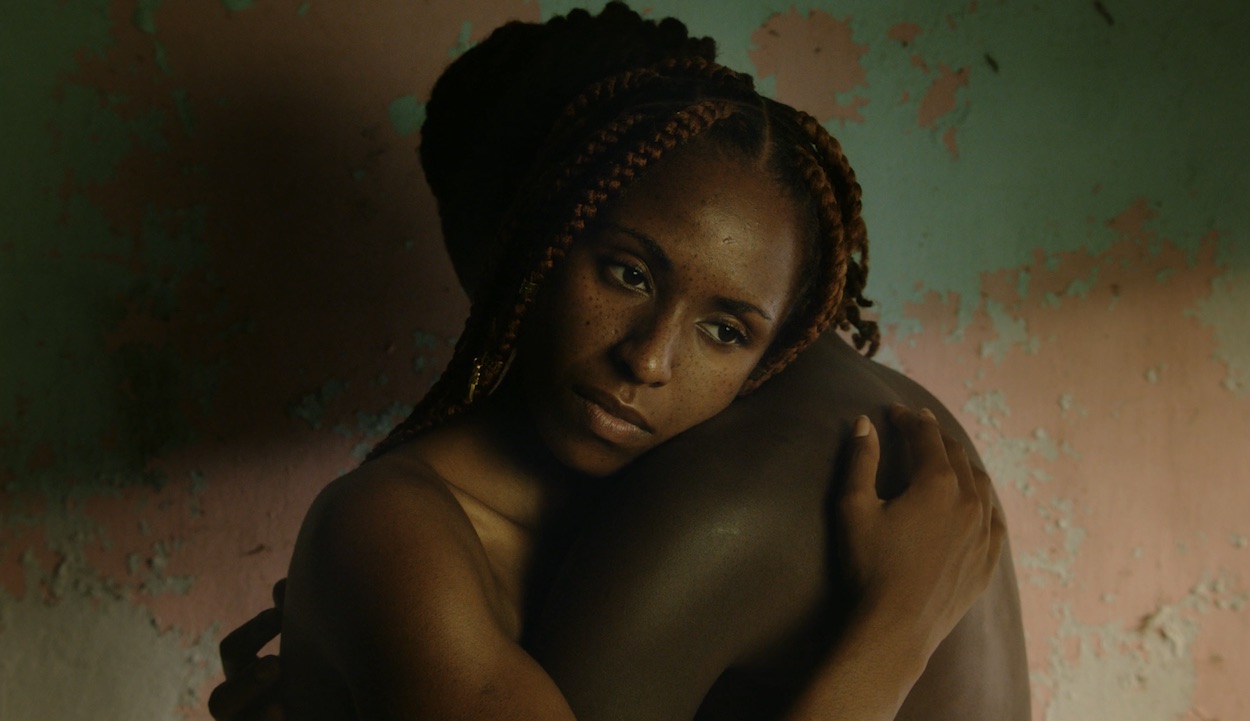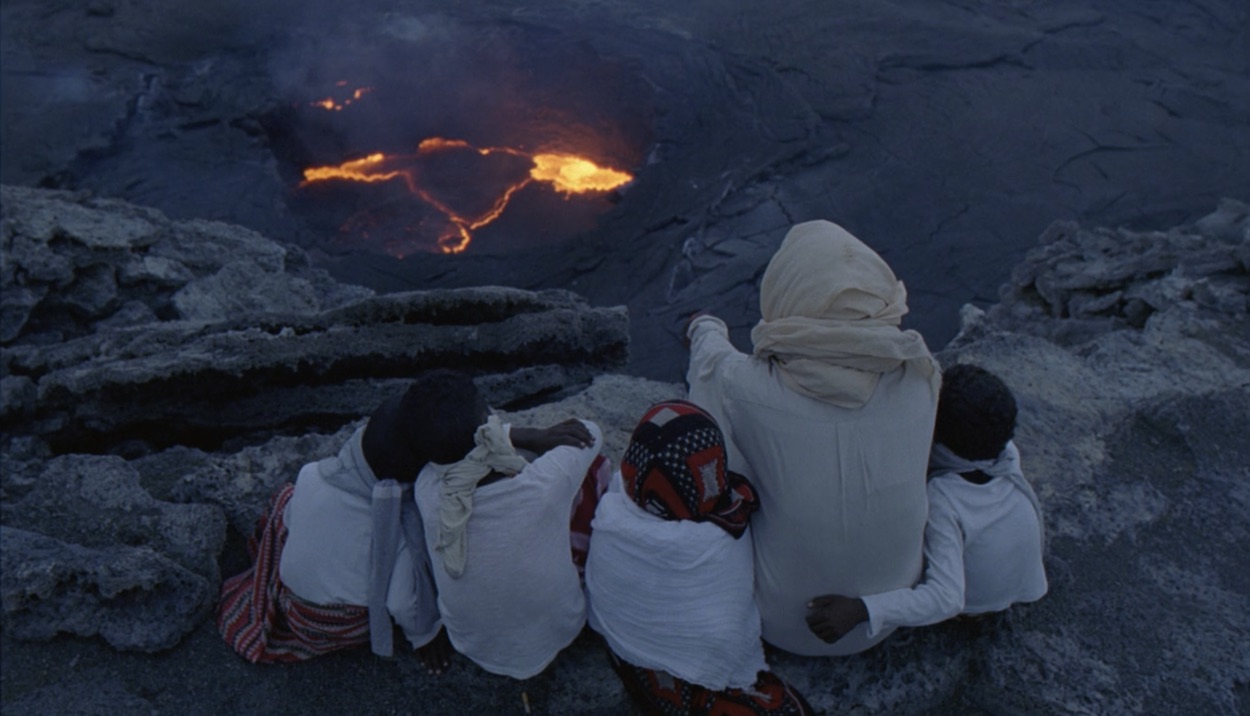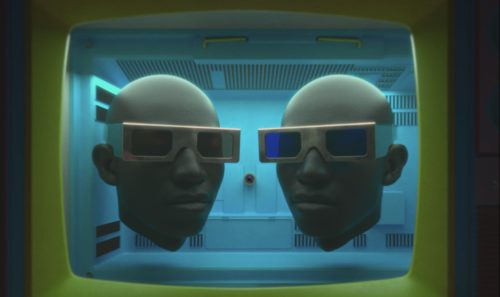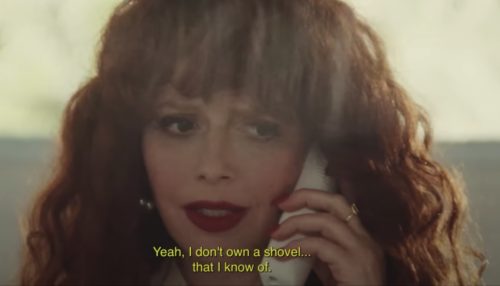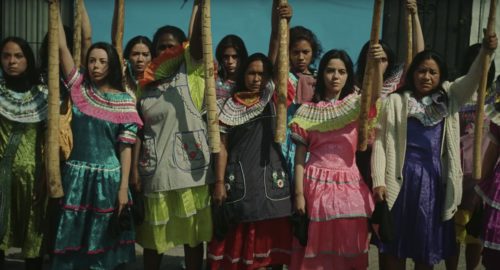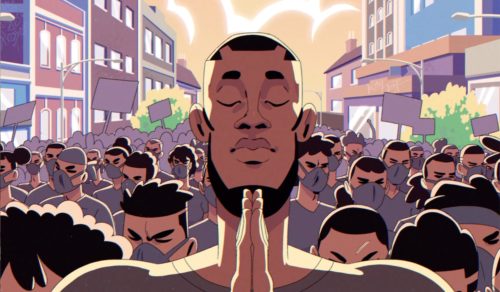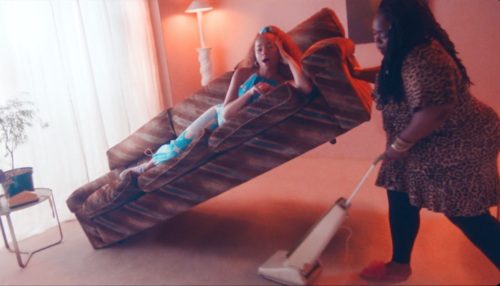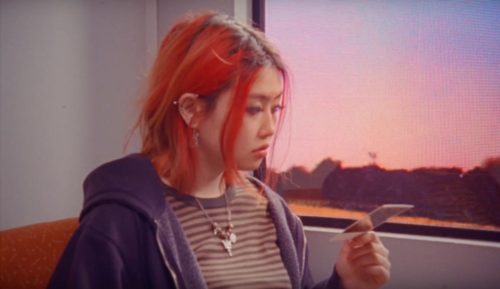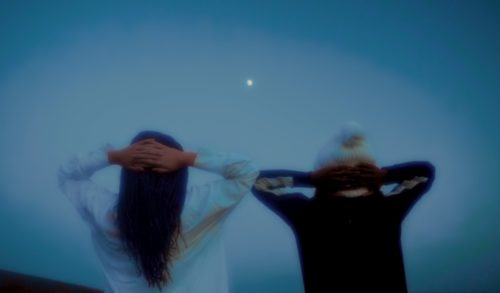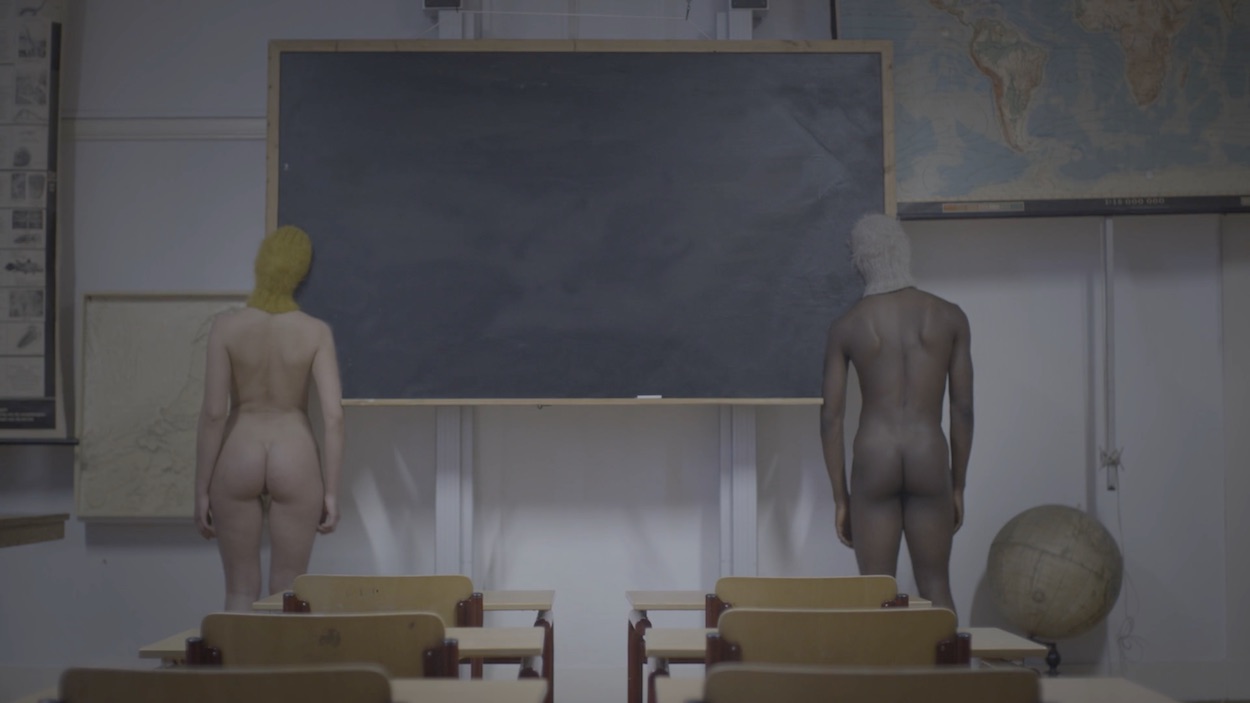 Still from Hormones Are My Master for Ninamounah label
Still from Hormones Are My Master for Ninamounah label
You grew up in East Germany in the Nineties. What sparked your early interest in fashion? Did you come from a particularly creative family?
I grew up in a very conservative and culturally monotone environment without much perspective on creating a career or identity outside of family, wife, children, house. I was aware that I was different but was not able to commit to it mentally, so I think unconsciously I used fashion as a tool to express my difference physically. Clothing and fashion really was escapism for me. I was extremely lucky being brought up in a family that often wouldn’t necessarily understand the way I expressed myself, but also wouldn’t try to impose their idea of what a young boy should act and look like. School often was tough, but my room was always a safe place for me and I credit my parents for that.
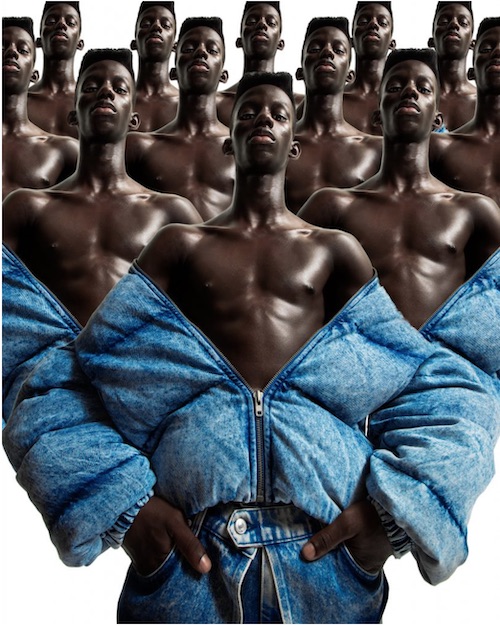 Daily Paper FW campaign concept Florian Joahn & JeanPaul Paula “AFRO FUTURISM”
Daily Paper FW campaign concept Florian Joahn & JeanPaul Paula “AFRO FUTURISM”
Your route into photography was fairly unorthodox: producing fake IDs for your friends! How did that shape your understanding of image-making and your later work in portrait photography?
It made me understand that a photograph is not a presentation of reality, but is really in the hands of whoever handles the image. There is power in that depending on the angle you choose. In the beginning, my angle was clearly beauty but over the years it started to shift and I was more focused on topics with social and cultural impact.
Last year, you made your short film debut with Hormones Are My Master for Ninamounah’s fall 2018 campaign. What was it about this project that enticed you to make the leap into filmmaking?
The destination always was film, but I decided in the beginning of my career it would be wiser to start with photography. I knew it would be easier to build up a professional portfolio since photography takes less time and money in order to realise projects. So when Ninamounah approached me for Hormones… it felt like a natural step – I had built up enough confidence and knowledge by then to take the project and make it my own. Also, Ninamounah had a very clear vision of where she wanted the film to go, so it was a comfortable collaboration where we could both lean on each other.
Hormones… perfectly captures the raw, awkwardness of adolescent sexual awakening and the omnipresence of sexuality, when even inanimate objects like lockers, sofas and pillars seem imbued with erotic charge. Can you explain a little about the creative process behind this piece and the development of the concept and narrative?
The starting point was Ninamounah’s latest collection which was about adolescent sexuality, and we wanted to show the confusion and omnipresent feelings that come with the sexual drive awakening. It’s a weird moment in your life where something has such a strong hold on you, but because it is so new you don’t have the tools developed in order to direct or control it. We incorporated the furniture pieces based on a BDSM porn genre in which people get tied up and are used as chairs, cupboards and tables.
You’ve described your creative starting point for photography as ‘needing a reason’ to make the image. Is this approach reflected in your filmic work?
That statement was very timely – in that moment, I was so overwhelmed by the amount of images that are put out on a daily basis. To be honest, I take a more intuitive approach with filming in the moment, I try to contextualise less and create more out of my own interest. My guideline is if I want to see it, if I think it is interesting, I go for it, no matter if it has been done before. Sometimes when I look too much at what other people are doing, I create ‘counter-work’ which in its essence is still defined by the original context, and is therefore never truly authentic.
Much of your work seeks to challenge stereotypical visions of gender identity, particularly black masculinity. Stylistically and creatively as a photographer and director, what is it that interests you about exploring this space?
It was a good space to explore because in my private life I had a vibrant discussion with my collaborative partner JeanPaul Paula about it, so we were busy with it on a daily basis. Also, it’s a topic that is still very much in the dark. So even if you light a single match, you can create an impact which feels empowering. This idea of illuminating spaces comes through in my practice in general, regardless whether it is photography, film or writing. Sometimes it is being didactic for myself – trying to learn about subjects that I feel like I lack knowledge in; sometimes it is about being didactic for others trying to teach and inform others on subjects I feel deserve more attention.
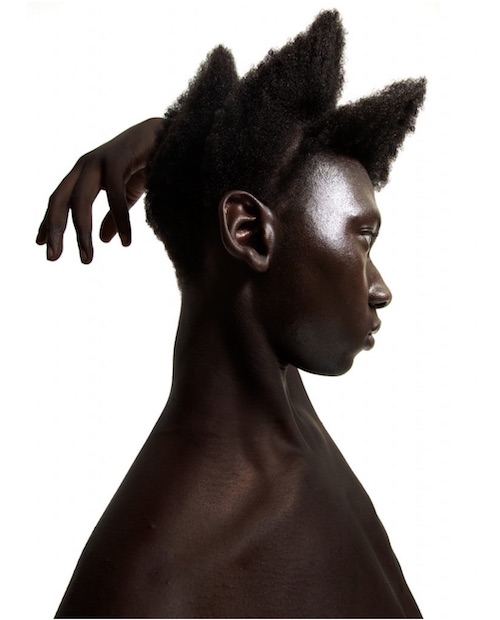 Daily Paper FW campaign 2019 concept Florian Joahn & JeanPaul Paula “AFRO FUTURISM”
Daily Paper FW campaign 2019 concept Florian Joahn & JeanPaul Paula “AFRO FUTURISM”
Racial bias is another strong theme running through your work, as seen in the short film you co-directed for Dazed, Whypipo: Mykki Blanco Speaks About Race in Whiteface. The characters parodied by Blanco – Donald Trump, Permit Patty and a rap-loving white guy who won’t discuss race – are amusing, but there’s also a serious side, such as when Blanco reflects on how people’s perceptions change towards him as a young man. How important were the contrasting tones when it came to getting the message across in the most powerful way?
Whypipo was a big learning moment for me – to this day, it’s still one of my favourite projects to have been a part of. But there was a discrepancy between the intention of the video and the target group. The video was aired on Dazed,which has a predominately young, liberal audience – and by the time the documentary came out, they had already had a formed opinion about the subject. Yet the look of the video was too far-out to be able to reach wider audiences. So it ended up feeling self-serving, rather than having a social impact and starting a discussion.
Extase, your music video for Dutch-Ghanian artist Akwasi, also explores endemic racism and black culture through vignettes of police brutality and slavery. How did the collaboration with Akwasi come about and what were you hoping to achieve in this video?
Akwasi reached out to my collaborative partner JeanPaul Paula, a black rights activist who then brought me on board. The video is largely inspired by George Dureau, a black and white photographer from the ‘70s who portrays predominantly disenfranchised males, focusing on black males and men with disfigurations. We wanted to create a piece of work that explored Dutch immigrants of colour in both the past and present. Hence the mix of empowering images, but also portraying the obstacles that present themselves on a daily basis, incorporating the roots of racism within a modern society.
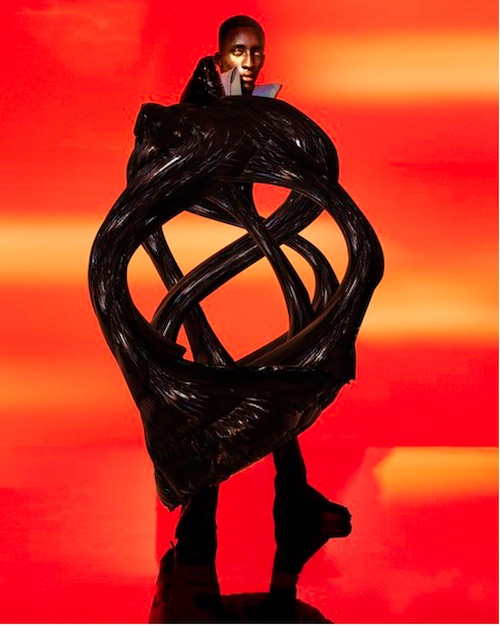 Daily Paper FW campaign concept Florian Joahn & JeanPaul Paula “AFRO FUTURISM”
Daily Paper FW campaign concept Florian Joahn & JeanPaul Paula “AFRO FUTURISM”
You’ve spoken previously about your frustration by the lack of diversity – be it race, gender or size – in the fashion industry. How soon do you see this changing, and what is the role of filmmakers and photographers in helping effect change?
We just have to push collectively. But also make sure to create spaces on our own, instead of waiting endlessly for established platforms and brands to make a change. Money is key, and these platforms will always cater towards a customer target group and use diversity only as a temporary slogan. I always take issue with creating visuals under the guideline of diversity. Because diversity is not something you choose for. Diversity just ‘is’. It is what we see on the streets. Only presenting a small fraction of society and therefore confirming stereotypes is a choice. No-one decides to be diverse, but people do decide to actively ignore it.
What projects are you currently working on?
I’m currently finishing two videos for upcoming artist Beau Nox and next week I’ll be heading to Ghana to shoot two more videos for Akwasi plus a short documentary, if time allows. I was lucky to sign with Compulsory in the beginning of 2020, who have really helped me to focus on creating the best start to the year.
Interview by Selena Schleh
